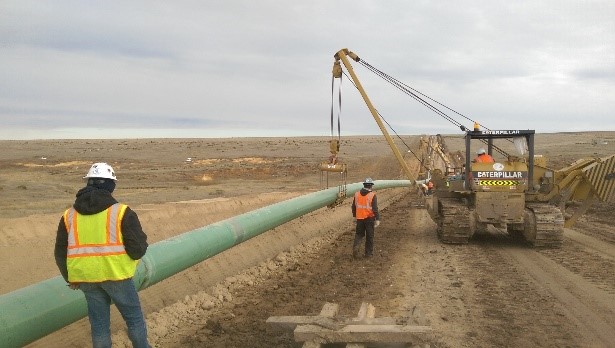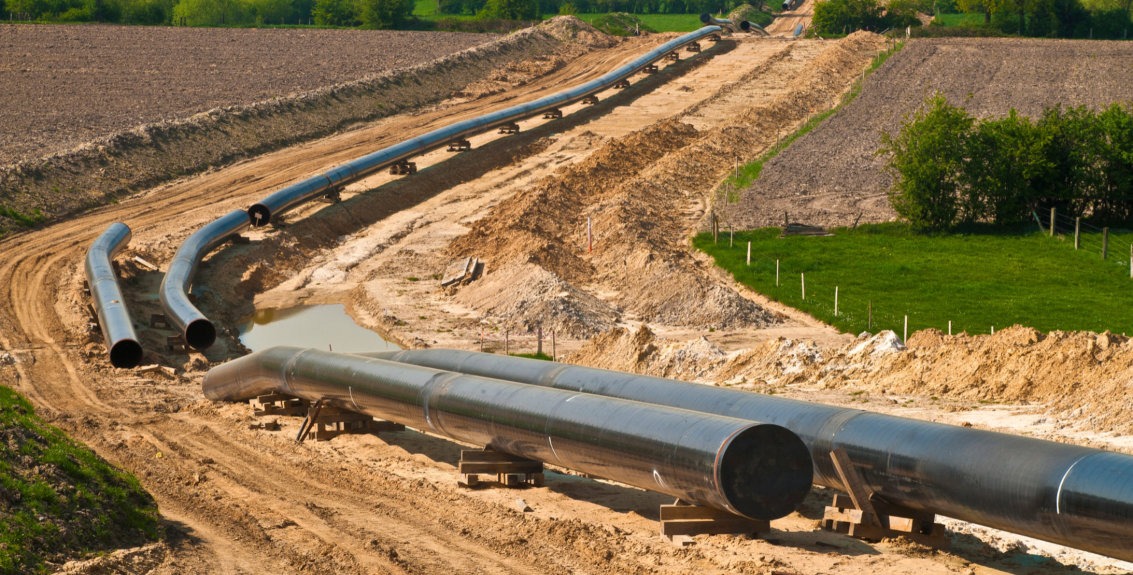Frequently Asked Questions About Working With Creek Pipe Company
The Value of Pipeline Construction: Checking Out the Providers Supplied in the Sector
Pipeline construction is an important part of contemporary framework. It helps with the transportation of important sources like oil, gas, and water. The market encompasses various solutions, consisting of planning, site prep work, and installation. Each stage needs accuracy and adherence to safety criteria. As areas depend on these systems for their incomes, comprehending the ins and outs of pipe construction discloses its significance and prospective difficulties. What variables affect the success of these tasks?
Overview of Pipeline Construction Providers
Pipeline construction solutions incorporate a variety of specialized activities made to help with the installment of pipelines for carrying numerous compounds, consisting of oil, gas, and water. These solutions typically include website prep work, excavation, installment of pipeline sectors, and backfilling. Experienced labor and innovative equipment are essential for guaranteeing each phase is performed with precision and safety.Safety methods are vital, as these tasks usually include dealing with unsafe materials and in tough settings. Quality control actions determine that the pipelines fulfill industry criteria and guidelines. Additionally, the services may include trenchless modern technology, which reduces surface disruption.Environmental factors to consider play a substantial function in pipeline construction, requiring analyses and reductions to secure bordering ecosystems. On the whole, pipeline construction solutions are vital for establishing the infrastructure required for power and water circulation, sustaining both economic growth and social needs.
Preparation and Design in Pipeline Projects
Efficient preparation and style are critical components of effective pipeline jobs, making sure that all facets are carefully dealt with before construction begins. This stage entails detailed usefulness researches that analyze the technological, financial, and environmental aspects affecting the project. Engineers and designers collaborate to develop detailed strategies that outline the pipe route, products, and construction techniques, straightening with regulatory needs and sector standards.Advanced software application and modeling strategies are usually used to imitate various scenarios, enhancing the design for performance and security. Ecological influence assessments are conducted to minimize potential injury to communities and communities, reflecting a commitment to lasting methods. Furthermore, stakeholder interaction is vital, fostering communication and dealing with concerns from affected events. Ultimately, effective preparation and layout set the foundation for a pipeline task, decreasing dangers and making certain a structured construction process, ultimately adding to the overall success of the procedure.
Website Preparation and Excavation
Thorough site preparation and excavation are crucial action in the pipeline construction process. This stage involves a detailed evaluation of the land where the pipeline will be set up. Job groups perform surveys to recognize soil types, topography, and existing utility lines to guarantee a risk-free and effective excavation. Appropriate site prep work decreases environmental effect and assists in smoother construction operations.Excavation follows, where hefty equipment is employed to eliminate dirt and rock, creating a trench that fulfills the defined deepness and width for the pipe. This procedure needs to stick to safety guidelines and environmental guidelines to prevent damage to bordering ecosystems.Additionally, erosion control steps are applied to support the site throughout and after excavation. Reliable site prep work and excavation add substantially to the total success of pipeline tasks, laying a solid structure for the subsequent phases of construction.
Pipeline Installation Techniques
Pipeline installation methods are vital for the successful execution of infrastructure tasks. Two noticeable methods consist of trenchless technology, which reduces surface disruption, and the open-cut excavation process, recognized for its uncomplicated technique. Each method offers distinctive benefits and factors to consider relying on task requirements and ecological variables.
Trenchless Technology Approaches
While conventional approaches of pipe setup commonly involve comprehensive excavation, trenchless technology approaches offer an extra effective and eco-friendly option. These ingenious methods, such as straight directional boring and pipeline bursting, reduce surface area interruption by permitting the installment of pipelines without substantial excavating. This not just reduces the ecological impact however additionally greatly cuts down on labor and remediation prices. Trenchless methods promote the installment of pipes in city areas where standard excavation would certainly be not practical or harmful to existing framework. In addition, these strategies can fit various soil kinds and problems, making them functional options for pipeline construction. Ultimately, trenchless technology stands for a significant development in the pipe industry, promoting sustainability and operational effectiveness.

Open-Cut Excavation Process
Open-cut excavation continues to be a basic method in pipe installment, characterized by the direct excavation of a trench to lay pipes. This method includes eliminating dirt and various other materials to create a trench of adequate depth and size, permitting the placement of pipes at the called for grade. Open-cut excavation is frequently favored for its cost-effectiveness and simpleness, especially in locations with stable soil conditions. However, it can disrupt surface area tasks and needs careful preparation to handle website traffic and ecological effects. Precaution have to be applied to shield workers and neighboring framework throughout the excavation Discover More Here process. Overall, while open-cut excavation may not be appropriate for all surfaces, it stays a commonly utilized strategy in pipeline construction.
Testing and Quality Control
Evaluating and quality control are crucial elements in pipeline construction, making sure that setups meet well established safety and security requirements and performance needs. Various examination methods and approaches are utilized to assess worldly quality and adherence to regulative conformity. This organized approach helps recognize possible issues before they escalate, securing the integrity of the pipe system.

Examination Techniques and Approaches
Assessment methods and approaches are crucial parts in making certain the integrity and security of pipe construction. Numerous approaches, including aesthetic inspections, ultrasonic testing, and radiographic assessments, are utilized to discover flaws and validate high quality. Aesthetic examinations permit for the recognition of surface area anomalies, while ultrasonic screening uses audio waves to assess wall surface density and locate imperfections internally. Radiographic assessments entail X-rays or gamma rays to generate pictures of the pipeline's framework, disclosing concealed issues. In addition, pressure screening is conducted to examine the pipeline's stability under operational problems. These approaches jointly add to an extensive understanding of the pipeline's condition, allowing prompt maintenance choices and making certain compliance with industry standards. Efficient inspection is essential for stopping failures and advertising long-lasting operational security.
Security Specifications Compliance
Making certain compliance with safety standards is paramount in pipeline construction, as it directly influences the task's general quality and integrity. Sticking to well-known policies and standards warranties that construction practices minimize dangers related to pipe installment and operation. Creek Pipe Texas oilfield. Extensive screening procedures, consisting of non-destructive screening and pressure analyses, are vital in confirming that pipes can endure the functional anxieties they will certainly experience. Quality control procedures are likewise crucial, as they develop a structure for regular monitoring and analysis throughout the construction procedure. By focusing on security criteria compliance, business not only protect employees and the setting but likewise enhance the stability of the pipeline, inevitably leading to long-term operational success and public rely on the infrastructure
Product High Quality Assessment
Product quality examination plays a considerable role in the overall integrity of pipeline construction. This process involves extensive screening and high quality assurance procedures to assure that products meet industry standards and requirements. Numerous examinations, consisting of tensile stamina, corrosion resistance, and weld stability evaluations, are performed to determine any prospective weaknesses. A complete analysis not just ensures the efficiency of the pipeline however likewise boosts safety and toughness over its life-span. In addition, applying look at more info quality assurance protocols aids mitigate threats connected with product failings, which can cause expensive repair services and ecological risks. By prioritizing material quality evaluation, companies can guarantee conformity with governing demands while promoting confidence among stakeholders in the integrity of their pipe systems.
Maintenance and Repair Work Services
Upkeep and repair service services play a vital role in the longevity and performance of pipeline systems. These services incorporate routine evaluations, troubleshooting, and restorative actions to resolve deterioration, leaks, and various other problems that might develop in time. Experienced professionals use innovative modern technologies such as ultrasonic screening and wise pigging to keep an eye on pipe integrity, guaranteeing that any type of potential problems are determined early.Additionally, upkeep programs usually include set up precautionary measures made to improve system integrity and decrease the likelihood of unforeseen failings. Repair services might involve the replacement of broken sections, sealing leakages, or utilizing trenchless modern technology for marginal disturbance.
Environmental Conformity and Precaution
Pipeline systems not just call for continuous repair and maintenance to operate effectively yet also need to comply with rigorous environmental conformity and safety actions. These guidelines are vital for minimizing environmental effect and ensuring public security. Business in the pipe construction sector implement extensive ecological analyses before project initiation, determining prospective threats to wildlife and ecosystems.Furthermore, adherence to safety protocols secures employees and bordering communities. This includes normal training on emergency response and spill prevention techniques.To preserve compliance, markets use checking technologies to spot leaks and other anomalies in real-time. Environmental administration plans are typically established to detail steps for attending to unanticipated problems throughout construction.Ultimately, stringent adherence to ecological conformity and precaution not only fulfills legal commitments yet additionally cultivates sustainable practices within the industry, advertising an equilibrium in between facilities advancement and environmental stewardship.
Regularly Asked Inquiries
What Job Opportunities Are Offered in Pipeline Construction?
Profession opportunities in pipeline construction incorporate functions such as job managers, engineers, welders, and safety assessors. These settings need diverse abilities, offering paths for growth in a vital sector of infrastructure growth and power circulation.

How Do Pipeline Projects Influence Citizen Communities?
Pipeline jobs significantly impact local areas by affecting economic development, see this site supplying task opportunities, and enhancing framework. Nonetheless, they might also increase concerns regarding environmental impacts, land usage, and prospective disturbances to neighborhood communication and natural ecosystems.
What Technology Is Utilized in Modern Pipeline Construction?
Modern pipe construction makes use of advanced innovations such as GIS for mapping, drones for airborne studies, and automated welding systems to enhance efficiency, security, and accuracy, inevitably facilitating the effective transportation of sources throughout numerous surfaces. Creek Pipe Company.
Exactly How Are Pipeline Construction Expenses Estimated?
Pipeline construction expenses are estimated with in-depth analyses of products, labor, tools, and governing needs. Variables like surface, task dimension, and ecological factors to consider additionally substantially affect the total spending plan and economic planning for construction.
What Are the Biggest Difficulties in Pipeline Construction Projects?
The biggest challenges in pipe construction tasks include regulative compliance, ecological problems, logistical problems, protecting funding, and taking care of labor scarcities. Each variable can considerably affect timelines and budgets, making complex the general execution of the project.